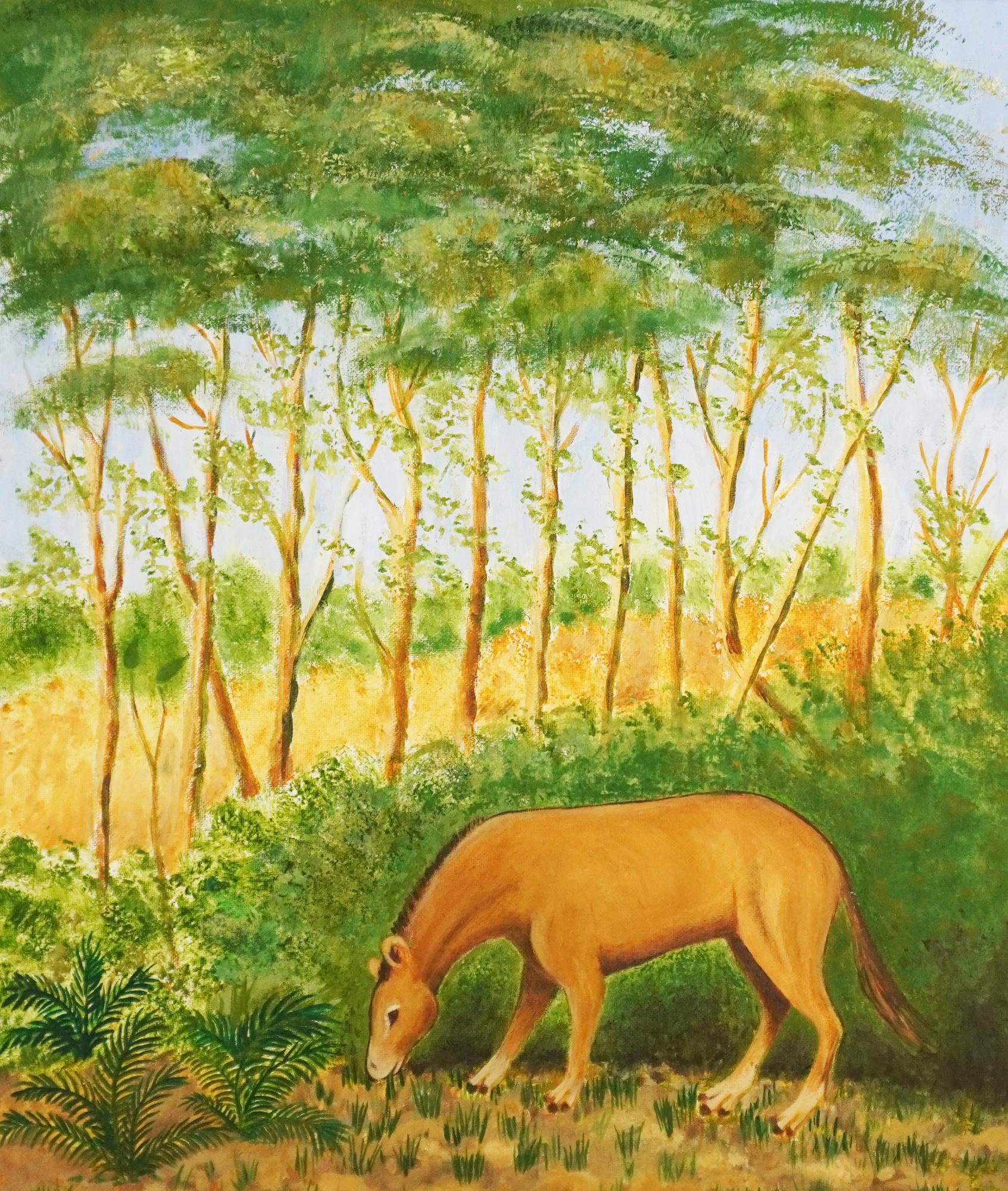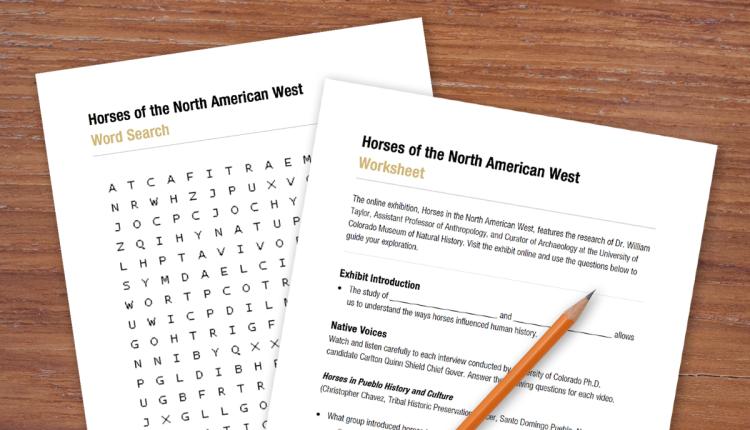The CU Museum is closed we will be opening early in the spring semester.
During this time, collection visits will be available by appointment and other special access requests will be considered on a case-by-case basis.
Please email cumuseum@colorado.edu for more information.
Horses in the North American West
My research seeks to understand when, why, and how horses shaped human history by studying horse equipment and ancient animal bones. In this exhibit, you can explore the history of horses in the American West.
Horses first evolved in North America. Some of their early ancestors lived 30–40 million years ago and were small, three-toed browsers that fed on leaves of woody plants. By the last Ice Age, large single-toed animals, who fed on grasses (similar to the horses we know today), had become widespread. These wild horses went extinct about 10,000 years ago, possibly due to a combination of climate change and human hunting.
In the 16th century, Spanish colonists brought horses from Europe, reintroducing them into the deserts and grasslands of western North America. Some Native peoples quickly became master horsemen, developing new ways of riding, controlling, and herding horses (along with donkeys and mules). Horses and Indigenous people formed deep cultural and economic bonds that shaped the West, and persist into the 21st century.
William Taylor, PhD
Assistant Professor of Anthropology, Curator of Archaeology
Native Voices
Interviews conducted by CU Ph.D. candidate Carlton Quinn Shield Chief Gover.
Horses in Pueblo History and Culture
Christopher Chavez, Tribal Historic Preservation Officer, Santo Domingo Pueblo, New Mexico
Horses in Ioway History and Culture
LanceFoster, Vice-Chairman and Tribal Historic Preservation Officer, Ioway Tribe of Kansas and Nebraska
Horses in Pawnee History and Culture
MattReed, Historic Preservation Officer, Pawnee Nation
Interactive 3D Models
Eocene-Oligocene
(36.5–32.8 million years ago)
One ancestor of modern domestic horses includes the Mesohippus, a small, three-toed plant eater about the size of a greyhound dog.
Late Pleistocene
(19,000–12,000 years ago)
These large, single-toed animals were similar to the domestic horses we have today, but went extinct about 10,000 years ago.
19th century (Navajo)
After Spanish colonists brought horses from Europe, some Native peoples quickly became master horsemen and developed new ways of controlling horses. This intricate bit was crafted by a Navajo blacksmith.
Late 19th century (Crow)
This 19th century saddle from Montana—made from elk antler, hide, and decorated with beadwork—demonstrates the expert craftmanship and Indigenous design used to care for domestic horses in the Plains.
17th–19th centuries
Indigenous peoples developed new ways to care for and ride their domestic horses. This included the innovation of rawhide rope bridles, which looped over the animal’s lower jaw.
18th/19th century
This incredible petroglyph comes from Comanche National Grassland near Colorado’s southern border with New Mexico, part of the vast territory occupied by the Comanche during the 18th and 19th centuries.
Exhibit Introduction
Colorado Experience: Native Horses (RMPBS)

This PBS documentary features CU students Carlton Gover (Anthropology PhD student) and Chance Ward (MFS) profiling CU Museum’s NSF research on the introduction of horses into the Great Plains, and the ways that archaeology and Indigenous perspectives are coming together to reshape that story!
How Horses Changed History
Explore how the domestication of horses influenced the fate of entire civilizations and dramatically altered human history with this Ted-Ed video featuring the research of William T. Taylor.
Get to Know William Taylor
To learn more about Dr. Taylor's research and career path, check out Museum Unlocked, a podcast from the CU Museum of Natural History.
Educational Activities















